| |
|
|
24.
| Architecture Now |
| |

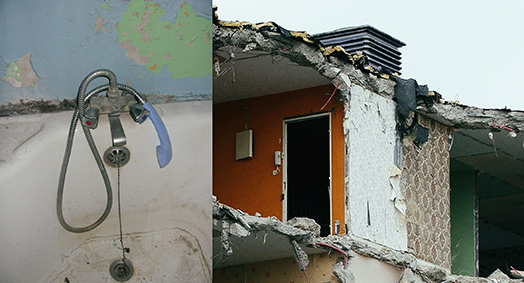
2010, Series of 38 photos, C-Print, 27 x 50 cm each.
Exhibition view from Pavillon de L'exil, Galerie Delacroix, 2017, Tanger.
Courtesy of the artist and Ceysson & Benetiere, Paris
Ed. of 5 + 2 A.P.
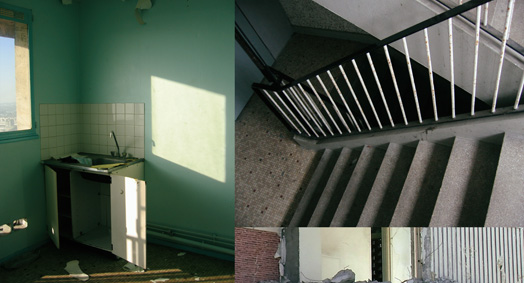
2010, Series of 38 photos, C-Print, 27 x 50 cm each.
Exhibition view from Pavillon de L'exil, Galerie Delacroix, 2017, Tanger.
Courtesy of the artist and Ceysson & Benetiere, Paris
Ed. of 5 + 2 A.P.
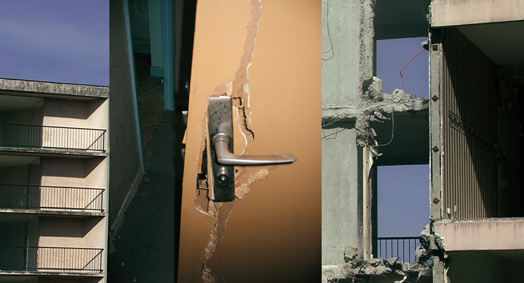
2010, Series of 38 photos, C-Print, 27 x 50 cm each.
Exhibition view from Pavillon de L'exil, Galerie Delacroix, 2017, Tanger.
Courtesy of the artist and Ceysson & Benetiere, Paris
Ed. of 5 + 2 A.P.

2010, Series of 38 photos, C-Print, 27 x 50 cm each.
Exhibition view from Pavillon de L'exil, Galerie Delacroix, 2017, Tanger.
Courtesy of the artist and Ceysson & Benetiere, Paris
Ed. of 5 + 2 A.P.
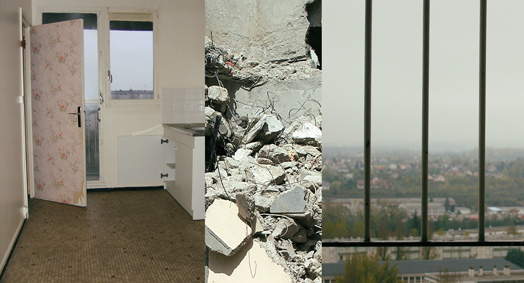
2010, Series of 38 photos, C-Print, 27 x 50 cm each.
Exhibition view from Pavillon de L'exil, Galerie Delacroix, 2017, Tanger.
Courtesy of the artist and Ceysson & Benetiere, Paris
Ed. of 5 + 2 A.P.

2010, Series of 38 photos, C-Print, 27 x 50 cm each.
Exhibition view from Pavillon de L'exil, Galerie Delacroix, 2017, Tanger.
Courtesy of the artist and Ceysson & Benetiere, Paris
Ed. of 5 + 2 A.P.
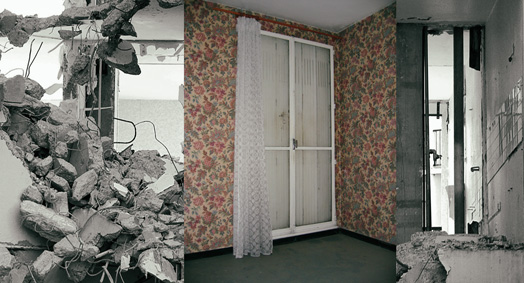
2010, Series of 38 photos, C-Print, 27 x 50 cm each.
Exhibition view from Pavillon de L'exil, Galerie Delacroix, 2017, Tanger.
Courtesy of the artist and Ceysson & Benetiere, Paris
Ed. of 5 + 2 A.P.

2010, Series of 38 photos, C-Print, 27 x 50 cm each.
Exhibition view from Pavillon de L'exil, Galerie Delacroix, 2017, Tanger.
Courtesy of the artist and Ceysson & Benetiere, Paris
Ed. of 5 + 2 A.P.
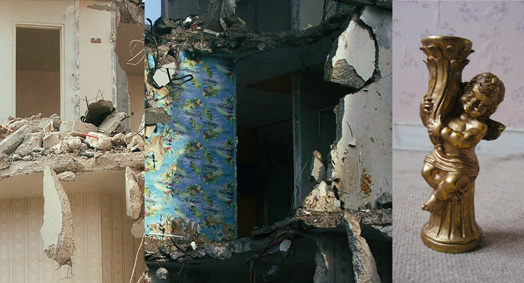
2010, Series of 38 photos, C-Print, 27 x 50 cm each.
Exhibition view from Pavillon de L'exil, Galerie Delacroix, 2017, Tanger.
Courtesy of the artist and Ceysson & Benetiere, Paris
Ed. of 5 + 2 A.P.
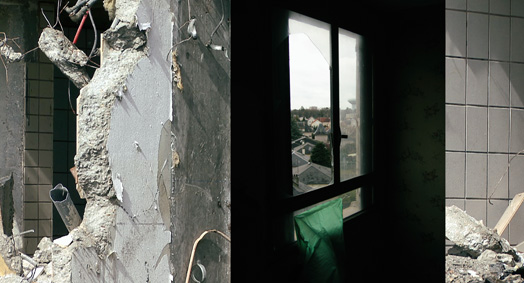
2010, Series of 38 photos, C-Print, 27 x 50 cm each.
Exhibition view from Pavillon de L'exil, Galerie Delacroix, 2017, Tanger.
Courtesy of the artist and Ceysson & Benetiere, Paris
Ed. of 5 + 2 A.P.
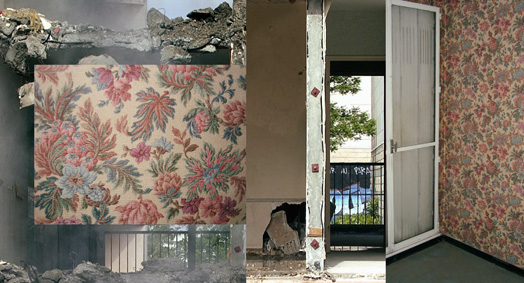
2010, Series of 38 photos, C-Print, 27 x 50 cm each.
Exhibition view from Pavillon de L'exil, Galerie Delacroix, 2017, Tanger.
Courtesy of the artist and Ceysson & Benetiere, Paris
Ed. of 5 + 2 A.P.

2010, Series of 38 photos, C-Print, 27 x 50 cm each.
Exhibition view from Pavillon de L'exil, Galerie Delacroix, 2017, Tanger.
Courtesy of the artist and Ceysson & Benetiere, Paris
Ed. of 5 + 2 A.P.
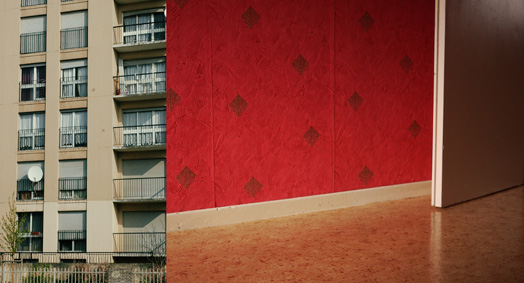
2010, Series of 38 photos, C-Print, 27 x 50 cm each.
Exhibition view from Pavillon de L'exil, Galerie Delacroix, 2017, Tanger.
Courtesy of the artist and Ceysson & Benetiere, Paris
Ed. of 5 + 2 A.P.
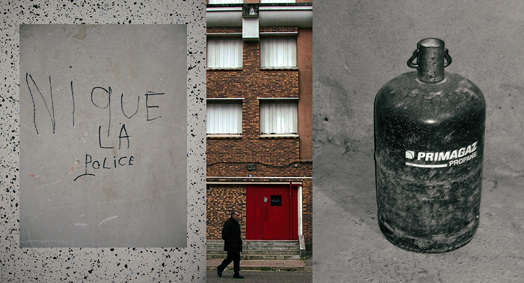
2010, Series of 38 photos, C-Print, 27 x 50 cm each.
Exhibition view from Pavillon de L'exil, Galerie Delacroix, 2017, Tanger.
Courtesy of the artist and Ceysson & Benetiere, Paris
Ed. of 5 + 2 A.P.
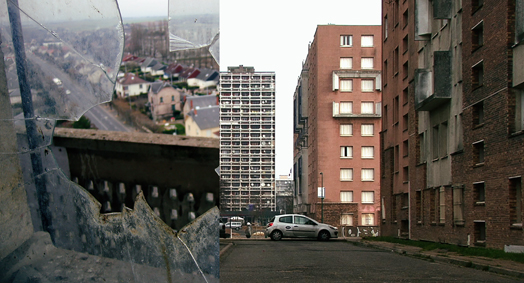
2010, Series of 38 photos, C-Print, 27 x 50 cm each.
Exhibition view from Pavillon de L'exil, Galerie Delacroix, 2017, Tanger.
Courtesy of the artist and Ceysson & Benetiere, Paris
Ed. of 5 + 2 A.P.
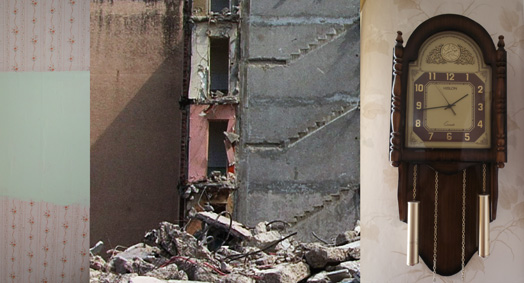
2010, Series of 38 photos, C-Print, 27 x 50 cm each.
Exhibition view from Pavillon de L'exil, Galerie Delacroix, 2017, Tanger.
Courtesy of the artist and Ceysson & Benetiere, Paris
Ed. of 5 + 2 A.P.
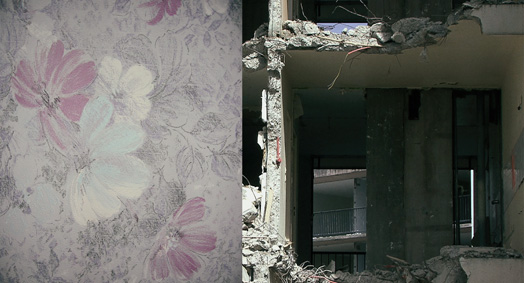
2010, Series of 38 photos, C-Print, 27 x 50 cm each.
Exhibition view from Pavillon de L'exil, Galerie Delacroix, 2017, Tanger.
Courtesy of the artist and Ceysson & Benetiere, Paris
Ed. of 5 + 2 A.P.
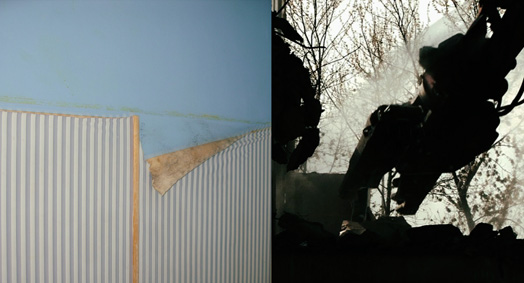
2010, Series of 38 photos, C-Print, 27 x 50 cm each.
Exhibition view from Pavillon de L'exil, Galerie Delacroix, 2017, Tanger.
Courtesy of the artist and Ceysson & Benetiere, Paris
Ed. of 5 + 2 A.P.
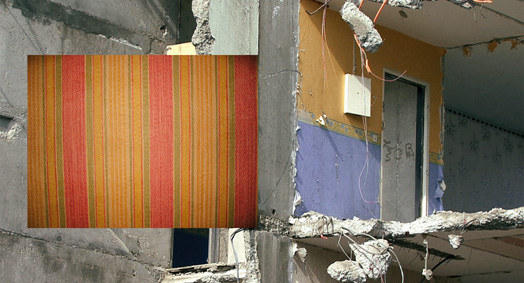
2010, Series of 38 photos, C-Print, 27 x 50 cm each.
Exhibition view from Pavillon de L'exil, Galerie Delacroix, 2017, Tanger.
Courtesy of the artist and Ceysson & Benetiere, Paris
Ed. of 5 + 2 A.P.
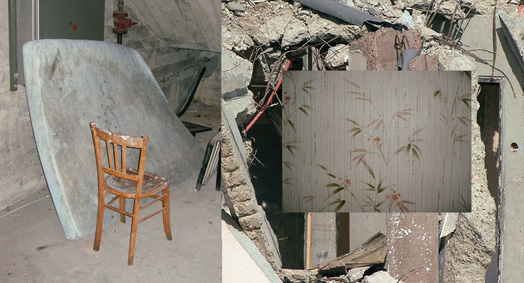
2010, Series of 38 photos, C-Print, 27 x 50 cm each.
Exhibition view from Pavillon de L'exil, Galerie Delacroix, 2017, Tanger.
Courtesy of the artist and Ceysson & Benetiere, Paris
Ed. of 5 + 2 A.P.
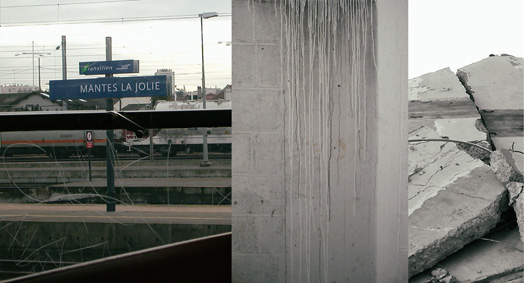
2010, Series of 38 photos, C-Print, 27 x 50 cm each.
Exhibition view from Pavillon de L'exil, Galerie Delacroix, 2017, Tanger.
Courtesy of the artist and Ceysson & Benetiere, Paris
Ed. of 5 + 2 A.P.
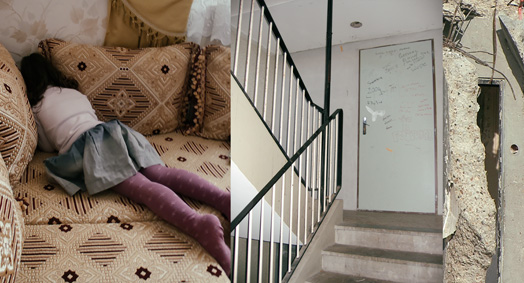
2010, Series of 38 photos, C-Print, 27 x 50 cm each.
Exhibition view from Pavillon de L'exil, Galerie Delacroix, 2017, Tanger.
Courtesy of the artist and Ceysson & Benetiere, Paris
Ed. of 5 + 2 A.P.
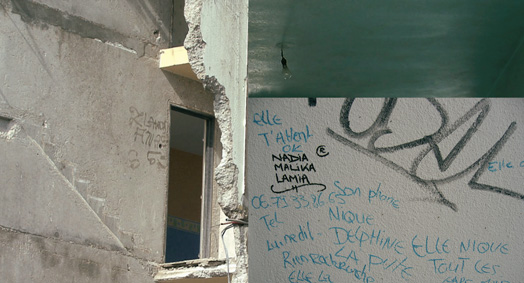
2010, Series of 38 photos, C-Print, 27 x 50 cm each.
Exhibition view from Pavillon de L'exil, Galerie Delacroix, 2017, Tanger.
Courtesy of the artist and Ceysson & Benetiere, Paris
Ed. of 5 + 2 A.P.
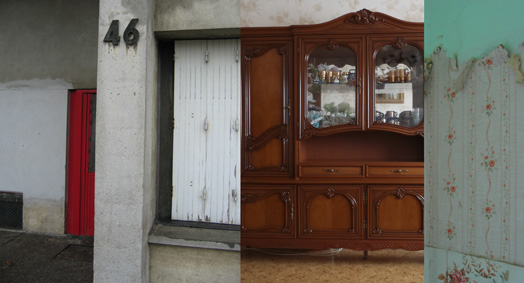
2010, Series of 38 photos, C-Print, 27 x 50 cm each.
Exhibition view from Pavillon de L'exil, Galerie Delacroix, 2017, Tanger.
Courtesy of the artist and Ceysson & Benetiere, Paris
Ed. of 5 + 2 A.P.

2010, Series of 38 photos, C-Print, 27 x 50 cm each.
Exhibition view from Pavillon de L'exil, Galerie Delacroix, 2017, Tanger.
Courtesy of the artist and Ceysson & Benetiere, Paris
Ed. of 5 + 2 A.P.
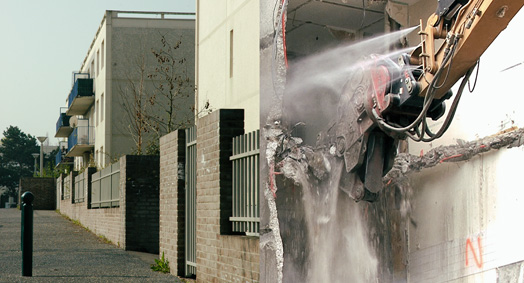
2010, Series of 38 photos, C-Print, 27 x 50 cm each.
Exhibition view from Pavillon de L'exil, Galerie Delacroix, 2017, Tanger.
Courtesy of the artist and Ceysson & Benetiere, Paris
Ed. of 5 + 2 A.P.
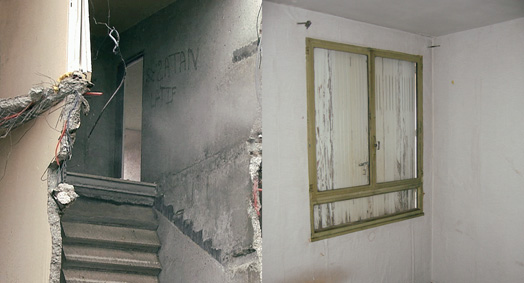
2010, Series of 38 photos, C-Print, 27 x 50 cm each.
Exhibition view from Pavillon de L'exil, Galerie Delacroix, 2017, Tanger.
Courtesy of the artist and Ceysson & Benetiere, Paris
Ed. of 5 + 2 A.P.
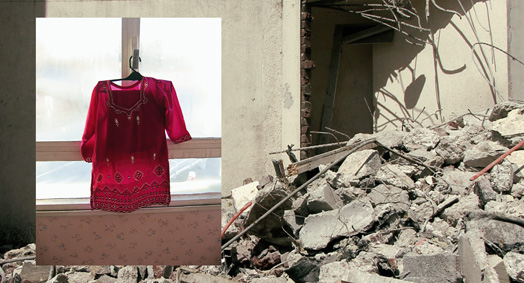
2010, Series of 38 photos, C-Print, 27 x 50 cm each.
Exhibition view from Pavillon de L'exil, Galerie Delacroix, 2017, Tanger.
Courtesy of the artist and Ceysson & Benetiere, Paris
Ed. of 5 + 2 A.P.
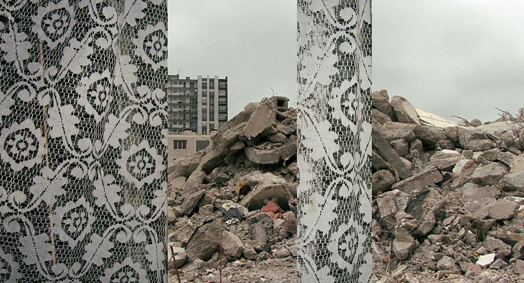
2010, Series of 38 photos, C-Print, 27 x 50 cm each.
Exhibition view from Pavillon de L'exil, Galerie Delacroix, 2017, Tanger.
Courtesy of the artist and Ceysson & Benetiere, Paris
Ed. of 5 + 2 A.P.
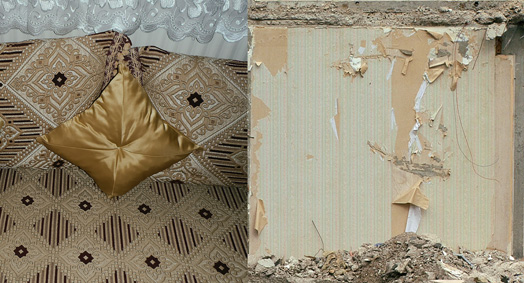
2010, Series of 38 photos, C-Print, 27 x 50 cm each.
Exhibition view from Pavillon de L'exil, Galerie Delacroix, 2017, Tanger.
Courtesy of the artist and Ceysson & Benetiere, Paris
Ed. of 5 + 2 A.P.
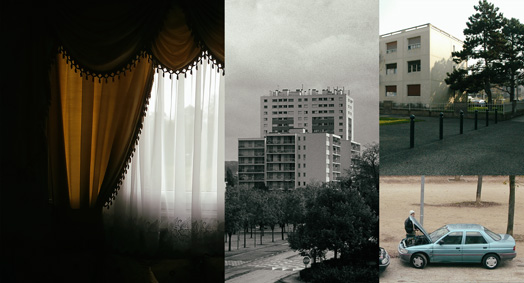
2010, Series of 38 photos, C-Print, 27 x 50 cm each.
Exhibition view from Pavillon de L'exil, Galerie Delacroix, 2017, Tanger.
Courtesy of the artist and Ceysson & Benetiere, Paris
Ed. of 5 + 2 A.P.
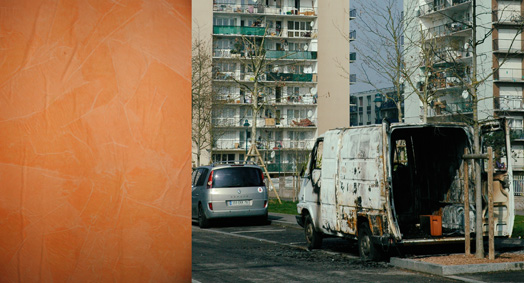
2010, Series of 38 photos, C-Print, 27 x 50 cm each.
Exhibition view from Pavillon de L'exil, Galerie Delacroix, 2017, Tanger.
Courtesy of the artist and Ceysson & Benetiere, Paris
Ed. of 5 + 2 A.P.
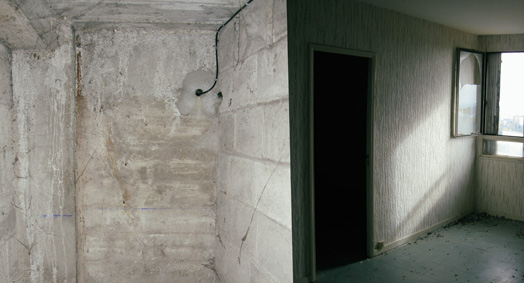
2010, Series of 38 photos, C-Print, 27 x 50 cm each.
Exhibition view from Pavillon de L'exil, Galerie Delacroix, 2017, Tanger.
Courtesy of the artist and Ceysson & Benetiere, Paris
Ed. of 5 + 2 A.P.

2010, Series of 38 photos, C-Print, 27 x 50 cm each.
Exhibition view from Pavillon de L'exil, Galerie Delacroix, 2017, Tanger.
Courtesy of the artist and Ceysson & Benetiere, Paris
Ed. of 5 + 2 A.P.

2010, Series of 38 photos, C-Print, 27 x 50 cm each.
Exhibition view from Pavillon de L'exil, Galerie Delacroix, 2017, Tanger.
Courtesy of the artist and Ceysson & Benetiere, Paris
Ed. of 5 + 2 A.P.
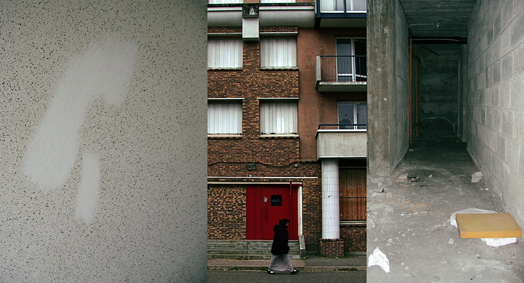
2010, Series of 38 photos, C-Print, 27 x 50 cm each.
Exhibition view from Pavillon de L'exil, Galerie Delacroix, 2017, Tanger.
Courtesy of the artist and Ceysson & Benetiere, Paris
Ed. of 5 + 2 A.P.
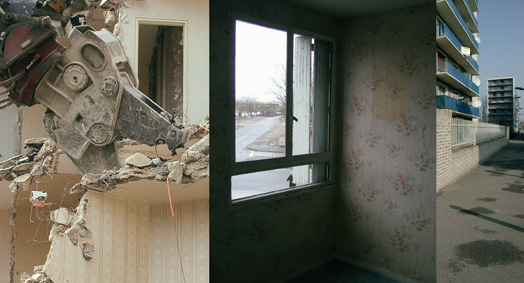
2010, Series of 38 photos, C-Print, 27 x 50 cm each.
Exhibition view from Pavillon de L'exil, Galerie Delacroix, 2017, Tanger.
Courtesy of the artist and Ceysson & Benetiere, Paris
Ed. of 5 + 2 A.P.

2010, Series of 38 photos, C-Print, 27 x 50 cm each.
Exhibition view from Pavillon de L'exil, Galerie Delacroix, 2017, Tanger.
Courtesy of the artist and Ceysson & Benetiere, Paris
Ed. of 5 + 2 A.P.
''Through his interest in the architecture of cities he looks at a world dominated by new technologies, from the vantage point of the Arab world, with an ironic gaze.
He works through his own cultural codes, towards the culture and art field of the West by utilising various materials, especially network materials
(connections, lines-cables – lines both as in Arabic calligraphy and in cable lines, figures, hadiths and readymades).''
Ali Akay, 2013
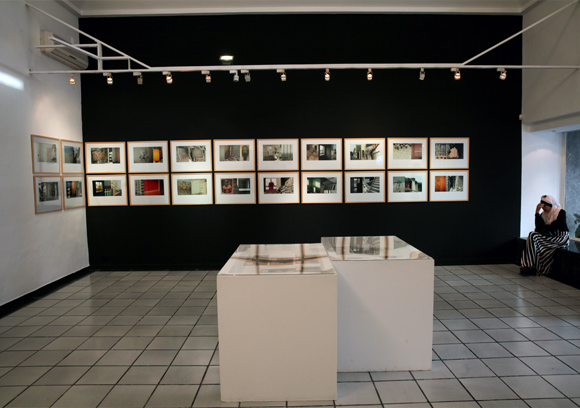
Architecture Now
Exhibition view from Pavillon de L'exil, Galerie Delacroix, 2017, Tanger.
Courtesy of the artist.
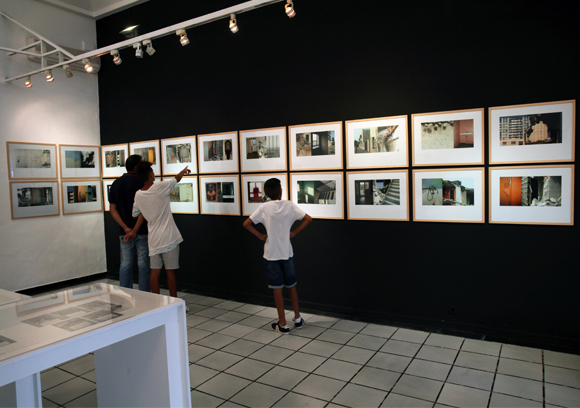
Architecture Now
Exhibition view from Pavillon de L'exil, Galerie Delacroix, 2017, Tanger.
Courtesy of the artist.
|
|
|
|
|
|
Dans les années 1990, commençait une nouvelle période où les États-nations étaient en déclin et une nouvelle structure politique et économique transnationale a commencé à émerger. La transformation des villes a été plus évidente dans les processus de gentrification. L'artiste mounir fatmi se maintient dans une considération critique du processus de «mégalopolitisation». Par son intérêt pour l'architecture des villes, il regarde un monde dominé par les nouvelles technologies, du point de vue du monde arabe, avec un regard ironique. Il travaille à travers ses propres codes culturels, vers le champ culturel et artistique de l'Occident en utilisant divers matériaux, en particulier les matériaux de réseau (connexions, câbles de lignes – lignes, comme dans la calligraphie arabe et dans les lignes de câble, figures, hadiths et readymades).
Architecture Now! Etat des lieux, 2010-en cours, est une œuvre vidéo dans laquelle fatmi montre la reconstruction de la ville. Elle présente les noms des philosophes post-structuralistes français sur des casques de protection et la destruction des vieilles maisons à la périphérie de la ville. Il met en place une critique du monde de l'investissement chaotique de l'architecture et de l'urbanisme en utilisant des matériaux et des objets nouvellement disponibles de la consommation culturelle technologique.
Nous progressons vers une zone de «désurbanisation» (urbanisation sans villes) telle qu'elle est perçue par Murray Bookchin, période pendant laquelle les ceintures urbaines s'emparent des villes.
Le modèle politique de l'urbanisation nouvelle se développe par le principe de la démolition et la construction dans diverses parties du monde. Les politiques de loyer économique qui sont devenues des politiques d'État organisées par la permission accordée par les municipalités jouent un rôle important dans la remise en forme des mégalopoles. Lorsque la cupidité de la ville se manifeste comme un marché, les politiques de démolition-construction établissent l'axe principal des mégalopoles et la préservation du passé se matérialise seulement à la surface, la simulation des façades des bâtiments. Le fait que la géographie de la ville soit une nouvelle topographie refaçonnée par les pouvoirs gouvernants discrédite les implications théoriques et pratiques des approches intellectuelles et urbaines.
Voici la ville et son bourdonnement en décibels excessifs, le bruit de la ville (cris, klaxons, alarmes, ajoutés aux sons de la vie nocturne, créant le bruit et la cacophonie de la musique) offrant un indice fondamental sur la vie dans les mégalopoles.
En conséquence de cette perception Save Manhattan, 2007 sera vraisemblablement lu comme une allusion au 11 septembre. Dans cette œuvre, nous rencontrons la condition du 21ème siècle, l'extérieur-de-l'Ouest regardant l'Occident avec empathie. Nous assistons à la même attitude dans le travail de mounir fatmi avec des figures et des hadiths ; un Nord-Africain, issu de la culture marocaine et critique à la fois de l'Occident et de l'Orient. La finesse des sens de la beauté et de la bonté nous transporte au-delà du «bien et du mal».
Ali Akay, professeur de sociologie, Université des Beaux-Arts Mimar Sinan ; Conservateur, Istanbul.
Extrait du catalogue de l'exposition «If you were to live here», 5èmeTrienniale d'Auckland, 2013.
|
|
In the 1990s, a new period started in which nation states were in decline and a new transnational political and economical structure began to emerge. The transformation of cities was most apparent in the processes of gentrification. Artist mounir fatmi resides within a critical consideration of the process of ‘megalopolitisation’. Through his interest in the architecture of cities he looks at a world dominated by new technologies, from the vantage point of the Arab world, with an ironic gaze. He works through his own cultural codes, towards the culture and art field of the West by utilising various materials, especially network materials (connections, lines-cables – lines both as in Arabic calligraphy and in cable lines, figures, hadiths and readymades).
Architecture Now! Etat des lieux, 2010–ongoing is a video work in which fatmi shows the rebuilding of the city. It features the names of French post-structuralist philosophers on protection helmets and the destruction of the old houses on the periphery of the city. He puts together a critique of the chaotic investment world of architecture and city planning using newly available materials and objects of technological cultural consumption.
We are progressing towards an area of ‘de-urbanisation’ (urbanisation without cities) as perceived by Murray Bookchin, a period in which urban belts take over cities.
The political new urbanisation model is expanding by the principle of demolish
and building in various parts of the worlds. Economical rent policies that have become state policies organised by the permission granted by municipalities play an important part in the reshaping of megalopolises. When the greed of the city manifests itself as a market, the demolish-and-build policies establish the main axis of the megalopolises and preservation of the past materialises only at the surface, the simulation of the façades of buildings. The fact that the geography of the city is a new topography reshaped by governing powers undermines the theoretical and practical implications of intellectual and urban approaches.
Here is the city and its humming in excessive decibels, the noise of the city (shouting, horns, alarms, together with the sounds of the night life creating the noise and cacophony of music) offering a basic clue about life in megalopolises.
As a result of this perception Save Manhattan, 2007 will likely be read as an allusion to September 11. In this work we encounter the condition of the 21st century, the outside-the-West gazing at and empathising with the West. We witness the same attitude in mounir fatmi’s work with figures and hadiths; a North African, coming from Moroccan culture and critical of both the West and the East. The sharpness of the senses of beauty and goodness transport us beyond ‘good and evil’.
Ali Akay, Professor of Sociology, University of Fine Arts Mimar Sinan; curator, Istanbul.
Excerpt from the exhibition catalogue "If you were to live here", 5th Auckland Trienniale, 2013.
|
|
|
|